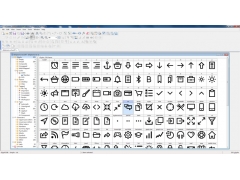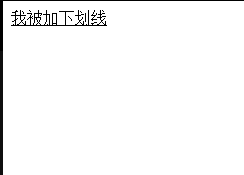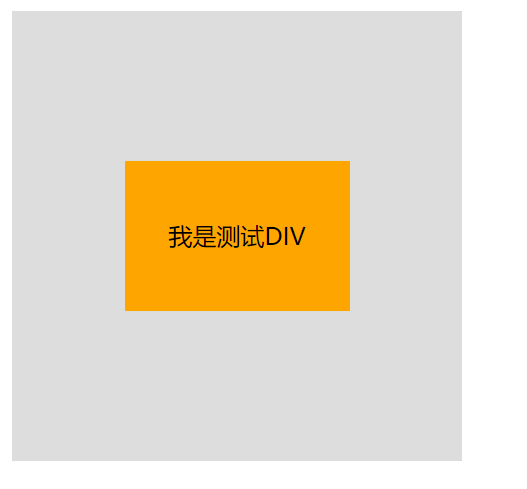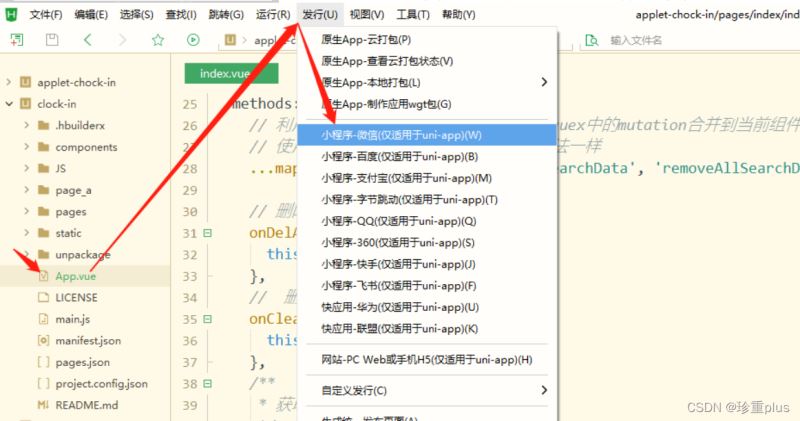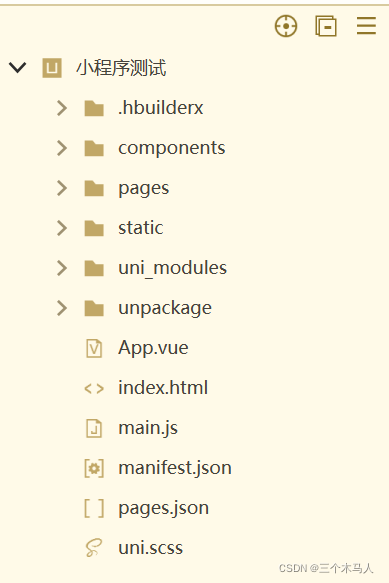这篇文章主要为大家介绍了写给小白学习的地理信息的表示法GeoJSON的详细实例,有需要的朋友可以借鉴参考下,希望能够有所帮助,祝大家多多进步,早日升职加薪
简介
GeoJSON 是一种使用 JSON 来编码各种地理数据结构的格式,是一种轻量级的数据交换格式,可以用来表示几何对象、属性数据、空间参考系统等信息
由两种对象组成:Geometry(几何对象)和 Feature(空间行状)
- 几何对象用来描述地理空间中的点、线、面等几何形状
- 空间行状用来描述一个有界的实体,包括几何对象和其他属性信息
几何对象类型有:
- 点:
Point - 多点:
MultiPoint - 线:
LineString - 多线:
MultiLineString - 面:
Polygon - 多面:
MultiPolygon - 几何集合:
GeometryCollection
空间行状类型有:
- 空间行状:
Feature - 空间形状集合:
FeatureCollection
举例
几何对象和空间行状可以相互嵌套
const GeoJSON = {
type: "FeatureCollection",
features: [
{
type: "Feature",
geometry: { type: "Point", coordinates: [121.4737, 31.2304] },
properties: { id: 1 },
},
{
type: "Feature",
geometry: { type: "Point", coordinates: [121.4837, 31.2504] },
properties: { id: 2 },
},
],
};空间行状
FeatureCollection
FeatureCollection 是 Feature 对象的集合,用来表示一组 Feature 对象
由 type 和 features 两个属性组成:
type属性的值为FeatureCollectionfeatures属性的值为Feature对象的数组
const FeatureCollectionJSON = {
type: "FeatureCollection",
features: [feature],
};Feature
Feature 对象用来表示几何对象的属性信息
由 type、geometry 和 properties 三个属性组成:
type属性的值为Feature,geometry属性的值为Geometry几何对象properties属性的值为属性对象(可选)
const FeatureJSON = {
type: "Feature",
geometry: { type: "Point", coordinates: [121.4737, 31.2304] },
properties: { id: 1 },
};几何对象
Point
Point 用来表示一个点
由 type 和 coordinates 两个属性组成:
type属性的值为Pointcoordinates属性的值为一个数组,数组的第一个元素为经度,第二个元素为纬度
const PointJSON = {
type: "Point",
coordinates: [121.4737, 31.2304],
};MultiPoint
MultiPoint 用来表示多个点
由 type 和 coordinates 两个属性组成:
type属性的值为MultiPointcoordinates属性的值为一个数组,数组的每个元素都是一个点的坐标
const MultiPointJSON = {
type: "MultiPoint",
coordinates: [
[121.4737, 31.2304],
[121.4837, 31.2504],
],
};LineString
LineString 用来表示一条线
由 type 和 coordinates 两个属性组成:
type属性的值为LineStringcoordinates属性的值为一个数组,数组的每个元素都是一个点的坐标
const LineStringJSON = {
type: "LineString",
coordinates: [
[121.4737, 31.2304],
[121.4837, 31.2504],
],
};MultiLineString
MultiLineString 用来表示多条线
由 type 和 coordinates 两个属性组成:
type属性的值为MultiLineStringcoordinates属性的值为一个数组,数组的每个元素都是一个线的坐标数组
const MultiLineStringJSON = {
type: "MultiLineString",
coordinates: [
[
[121.4737, 31.2304],
[121.4837, 31.2504],
],
[
[121.4727, 31.2314],
[121.4827, 31.2514],
],
],
};Polygon
Polygon 用来表示一个面
由 type 和 coordinates 两个属性组成:
type属性的值为Polygoncoordinates属性的值为一个数组,数组的第一个元素为外环的坐标数组,后面的元素为内环的坐标数组
polygon 的坐标数组的第一个元素和最后一个元素是相同的,表示闭合
const PolygonJSON = {
type: "Polygon",
coordinates: [
[
[121.4737, 31.2304],
[121.4837, 31.2504],
[121.4937, 31.2304],
[121.4737, 31.2304],
],
[
[121.4717, 31.2314],
[121.4827, 31.2524],
[121.4937, 31.2334],
[121.4757, 31.2344],
],
],
};MultiPolygon
MultiPolygon 用来表示多个面
由 type 和 coordinates 两个属性组成:
type属性的值为MultiPolygoncoordinates属性的值为一个数组,数组的每个元素都是一个面的坐标数组
const MultiPolygonJSON = {
type: "MultiPolygon",
coordinates: [
[
[
[121.4737, 31.2304],
[121.4837, 31.2504],
[121.4937, 31.2304],
[121.4737, 31.2304],
],
[
[121.4737, 31.2304],
[121.4837, 31.2504],
[121.4937, 31.2304],
[121.4737, 31.2304],
],
],
[
[
[121.4737, 31.2304],
[121.4837, 31.2504],
[121.4937, 31.2304],
[121.4737, 31.2304],
],
[
[121.4737, 31.2304],
[121.4837, 31.2504],
[121.4937, 31.2304],
[121.4737, 31.2304],
],
],
],
};GeometryCollection
GeometryCollection 用来表示几何对象的集合
由 type 和 geometries 两个属性组成:
type属性的值为GeometryCollectiongeometries属性的值为几何对象的数组
const GeometryCollectionJSON = {
type: "GeometryCollection",
geometries: [
{ type: "Point", coordinates: [121.4737, 31.2304] },
{
type: "LineString",
coordinates: [
[121.4737, 31.2304],
[121.4837, 31.2504],
],
},
],
};可选属性
这些属性都是 GeoJSON 的扩展属性,不是 GeoJSON 规范的一部分
id属性,用来描述FeatureCollection的唯一标识bbox属性,用来描述FeatureCollection的边界框- 四至坐标,一般用来做数据裁剪
- 这是一组左上角和右下角的坐标,示例:
[minLon, minLat, maxLon, maxLat]
properties属性,用来描述FeatureCollection的属性crs属性,用来描述坐标参考系
其他
coordinate
coordinate 是一个数组,表示一个点的坐标,数组的长度表示坐标的维度,一般是 2 维或 3 维
2维:[lon, lat]3维:[lon, lat, height]
coordinate 的第一个元素表示经度,第二个元素表示纬度,第三个元素表示高度
坐标顺序是 [lon, lat],这个是推荐顺序,可由 crs 属性指定
coordinates 是多维数组:
- 点:
[lon, lat] - 线:
[[lon, lat], [lon, lat]] - 面:
[[[lon, lat], [lon, lat]]] - 多面:
[[[[lon, lat], [lon, lat]]]]
坐标参考系
最常使用的坐标系是 EPSG:4326 和 EPSG:3857:
EPSG:4326是WGS84(CGCS2000,大地) 坐标系,是GeoJSON规范的默认坐标系EPSG:3857是Web Mercator(墨卡托) 坐标系,是OpenLayers的默认坐标系
它们的区别:
EPSG:4326是经纬度坐标系,EPSG:3857是投影坐标系EPSG:4326的坐标范围是[-180, -90, 180, 90],EPSG:3857的坐标范围是[-20037508.342789244, -20037508.342789244, 20037508.342789244, 20037508.342789244]EPSG:4326的坐标单位是度,EPSG:3857的坐标单位是米EPSG:4326的坐标原点是[0, 0],EPSG:3857的坐标原点是[-20037508.342789244, -20037508.342789244]EPSG:4326的坐标轴方向是[x, y],EPSG:3857的坐标轴方向是[x, -y]
在 ts 中使用
为了在 ts 使用 GeoJSON 能够有类型约束,我整理整理了一些 GeoJSON 的 ts 类型定义和创建 GeoJSON 的方法:
- geojson.d.ts
- geojson.helper.ts
举例:
表示一个点和多个点的 GeoJSON 集合:
使用geojson.d.ts
type PointType = FeatureCollection<Point | MultiPoint, GeoJsonProperties<T>>;
const point2Geojson: PointType<{ id: string; name?: string }> = {
type: "FeatureCollection",
features: [
{
type: "Feature",
geometry: {
type: "Point",
coordinates: [120.4737, 31.2304],
},
properties: { id: "12", name: "uccs" },
},
{
type: "Feature",
geometry: {
type: "MultiPoint",
coordinates: [
[121.4737, 31.2304],
[111.4737, 31.2204],
],
},
properties: { id: "1" },
},
],
};创建一个几何对象
使用geojson.helper.ts
const pointGeometry = point<{ id: string }>([120.4737, 31.2304], {
id: "1",
});
const featureGeoJSON = feature<Point>(pointGeometry);参考
- GeoJSON
- GeoJSON 格式
- GeoJSON 格式规范
- EPSG 4326 vs EPSG 3857 (投影,数据集,坐标系)
- turf.js
以上就是写给小白的地理信息的表示法GeoJSON的详细内容,更多关于GeoJSON地理信息表示法的资料请关注编程学习网其它相关文章!
本文标题为:写给小白学习的地理信息的表示法GeoJSON


基础教程推荐
- 基于Vue制作组织架构树组件 2024-04-08
- this[] 指的是什么内容 讨论 2023-11-30
- Ajax实现动态加载数据 2023-02-01
- vue离线环境如何安装脚手架vue-cli 2025-01-19
- CSS3的几个标签速记(推荐) 2024-04-07
- 浅析canvas元素的html尺寸和css尺寸对元素视觉的影响 2024-04-26
- JS前端广告拦截实现原理解析 2024-04-22
- js禁止页面刷新与后退的方法 2024-01-08
- 关于文字内容过长,导致文本内容超出html 标签宽度的解决方法之自动换行 2023-10-28
- 浅谈Vue2和Vue3的数据响应 2023-10-08








